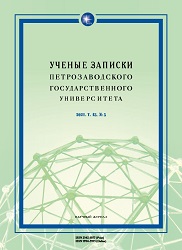О ГЕНЕЗИСЕ ОБРАЗА ШУТА В ПОВЕСТИ О. М. СОМОВА «ГАЙДАМАК»
GENESIS OF THE JESTER IN OREST SOMOV’S SHORT NOVEL HAIDAMAKA
Author(s): Kristina Nikolaevna MeshkovaSubject(s): Novel, Russian Literature, Theory of Literature
Published by: Петрозаводский государственный университет
Keywords: Orest Somov; Shakespeare; jester; romanticism; Shakespearism;
Summary/Abstract: The tradition of depicting jesters as carriers of hidden wisdom and unique human qualities has had a rich history of study, but this issue has not been sufficiently studied using the material of Russian literature. The article analyzes the image of the jester in Orest Somov’s short novel Haidamaka and examines its typological parallels with the jester from William Shakespeare’s tragedy King Lear. In the course of the analysis, the images of the colorful speare’s hero and Somov’s Ryabko are compared, and related plots and motifs are revealed. The image of the jester in Shakespeare’s and Somov’s stories differs from the traditional folklore representation in the texts of fiction: the role of the hero is expanded and does not just complement the plot anymore, his actions become full-fledged driving forces in the literary works. There are also typical comical motifs associated with it, but they are shifted to the background. Following Shakespeare, Somov portrays his hero as a witty, daring and sincere person, making him an exponent of the people’s voice. At the same time, Ryabko is endowed with a more selfless and sensitive character, he has completely new features, which is very different from the jesters in folklore or in the Renaissance literature: this is a philosophical type of personality, sensitive and ironic, yet at the same time resolute and ready to defend their beliefs.
Journal: Ученые записки Петрозаводского государственного университета
- Issue Year: 43/2021
- Issue No: 5
- Page Range: 103-108
- Page Count: 6
- Language: Russian

